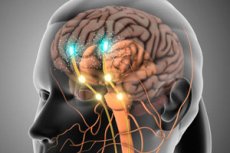New publications
Scientists have found a way to restore the brain's self-cleansing function
Last reviewed: 02.07.2025

All iLive content is medically reviewed or fact checked to ensure as much factual accuracy as possible.
We have strict sourcing guidelines and only link to reputable media sites, academic research institutions and, whenever possible, medically peer reviewed studies. Note that the numbers in parentheses ([1], [2], etc.) are clickable links to these studies.
If you feel that any of our content is inaccurate, out-of-date, or otherwise questionable, please select it and press Ctrl + Enter.

Research shows that neurological diseases like Alzheimer’s, Parkinson’s and others can be thought of as “dirty brain” diseases, in which the brain has difficulty clearing out harmful waste. Aging is a key risk factor, as we get older, the brain’s ability to clear out toxic buildup slows. However, new research in mice shows that it is possible to reverse age-related changes and restore the brain’s cleansing process.
This study shows that restoring the function of the neck lymphatic vessels can significantly improve the brain's age-slowed waste removal. And it did so using a drug already in clinical use, opening up a potential treatment strategy.
Douglas Kelly, PhD, professor of mechanical engineering in the Hajim School of Engineering at the University of Rochester, is one of the lead authors of the study published in the journal Nature Aging, along with Maiken Nedergaard, MD, co-director of the university's Center for Translational Neuroscience.
The brain’s glymphatic clearance system, first described by Nedergaard and colleagues in 2012, is a unique waste-clearing process in the brain that uses cerebrospinal fluid (CSF) to flush out excess proteins produced by normal brain cell activity. This discovery has led to new approaches to treating diseases associated with the accumulation of protein waste in the brain, such as Alzheimer’s (beta-amyloid and tau) and Parkinson’s (alpha-synuclein). In healthy, young brains, the glymphatic system effectively clears the brain of these toxic proteins, but as we age, this system slows down, setting the stage for these diseases to develop.
Network of tiny pumps removes waste from the brain
After protein-laden spinal fluid leaves the skull, it must travel through the lymphatic system and eventually to the kidneys, where it is processed along with the body’s other waste. The new study uses advanced imaging and particle tracking techniques to detail for the first time the pathway through the cervical lymphatic vessels in the neck through which half of the contaminated spinal fluid exits the brain.
In addition to measuring the flow of CSF, the researchers were able to observe and record the pulsation of lymphatic vessels in the neck, which help pull CSF out of the brain. “Unlike the cardiovascular system, where there’s one big pump — the heart — fluid in the lymphatic system is transported by a network of tiny pumps,” Kelly said. These microscopic pumps, called lymphangions, have valves to prevent backflow and connect to each other to form lymphatic vessels.
The researchers found that as the mice aged, the frequency of lymphangion contractions decreased and the valves stopped working. As a result, the rate of removal of contaminated CSF from the brain was 63% lower in older mice compared to younger animals.
A well-known drug restores the flow of cleansing fluids in the brain
The team then decided to see if they could revive the lymphangions, and identified a drug called prostaglandin F2α, a hormone-like compound often used in medicine to induce labor and known to stimulate smooth muscle contraction. Lymphangions are lined with smooth muscle cells, and when the researchers applied the drug to the cervical lymphatic vessels of old mice, the contraction rate and the flow of contaminated CSF from the brain increased, returning to levels seen in young mice.
“These vessels are conveniently located close to the surface of the skin, we know they’re important, and we now know how to speed up their function,” Kelly said. “It’s conceivable that this approach, perhaps in combination with other interventions, could form the basis for future therapies for these diseases.”
